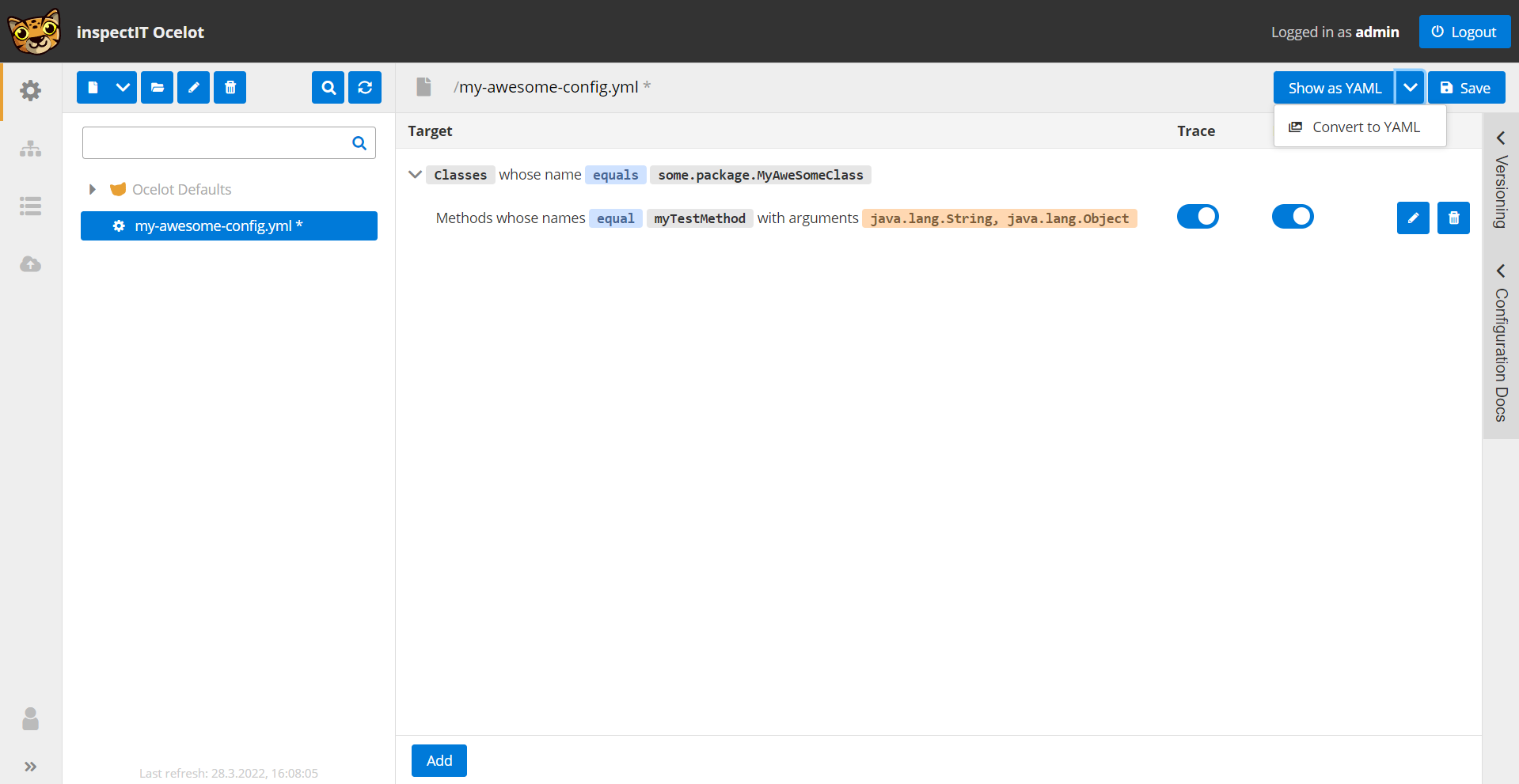Scope Wizard
Since writing configurations for inspectIT Ocelot can be a tedious task - especially if one is neither familiar with the YAML format nor the configuration itself - the inspectIT Configuration Server offers a Scope Wizard for creating basic configurations using a graphical user interface.
Accessing the Scope Wizard
One can easily access the Scope Wizard by clicking the Dropdown-Button next to the New File-button in the top left
corner of the server UI and selecting the entry Method Configuration.
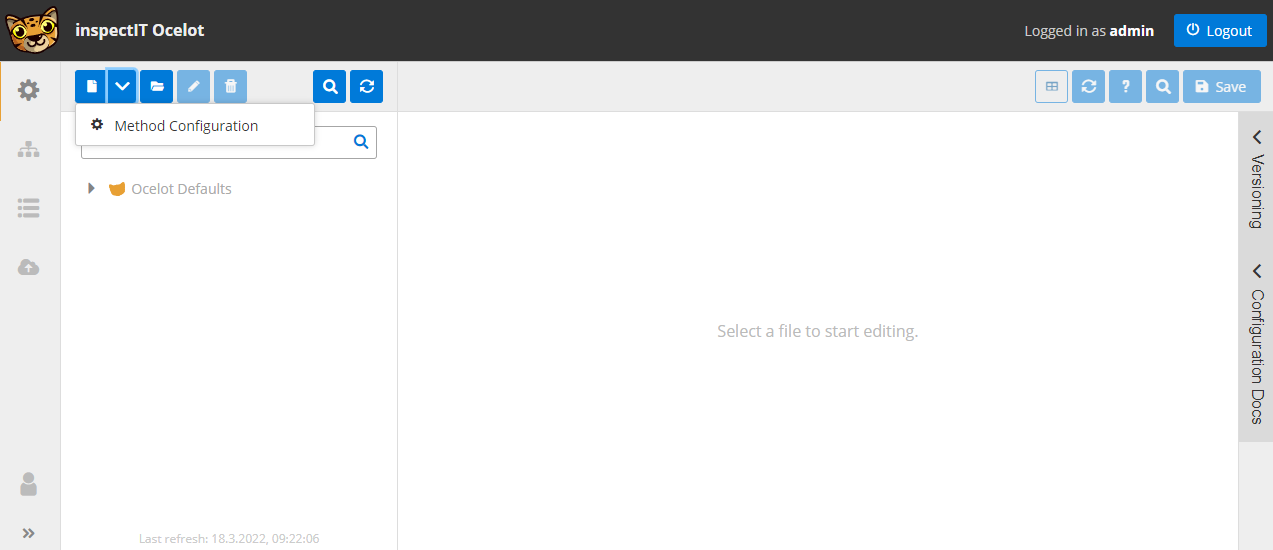
Next, a prompt asks you to enter a name for your new configuration file.
After entering a name for your config, the file is displayed in the file browser on the left side of the window. Note how a cog symbol marks the file. This symbol indicates that the file was created using the Scope Wizard.
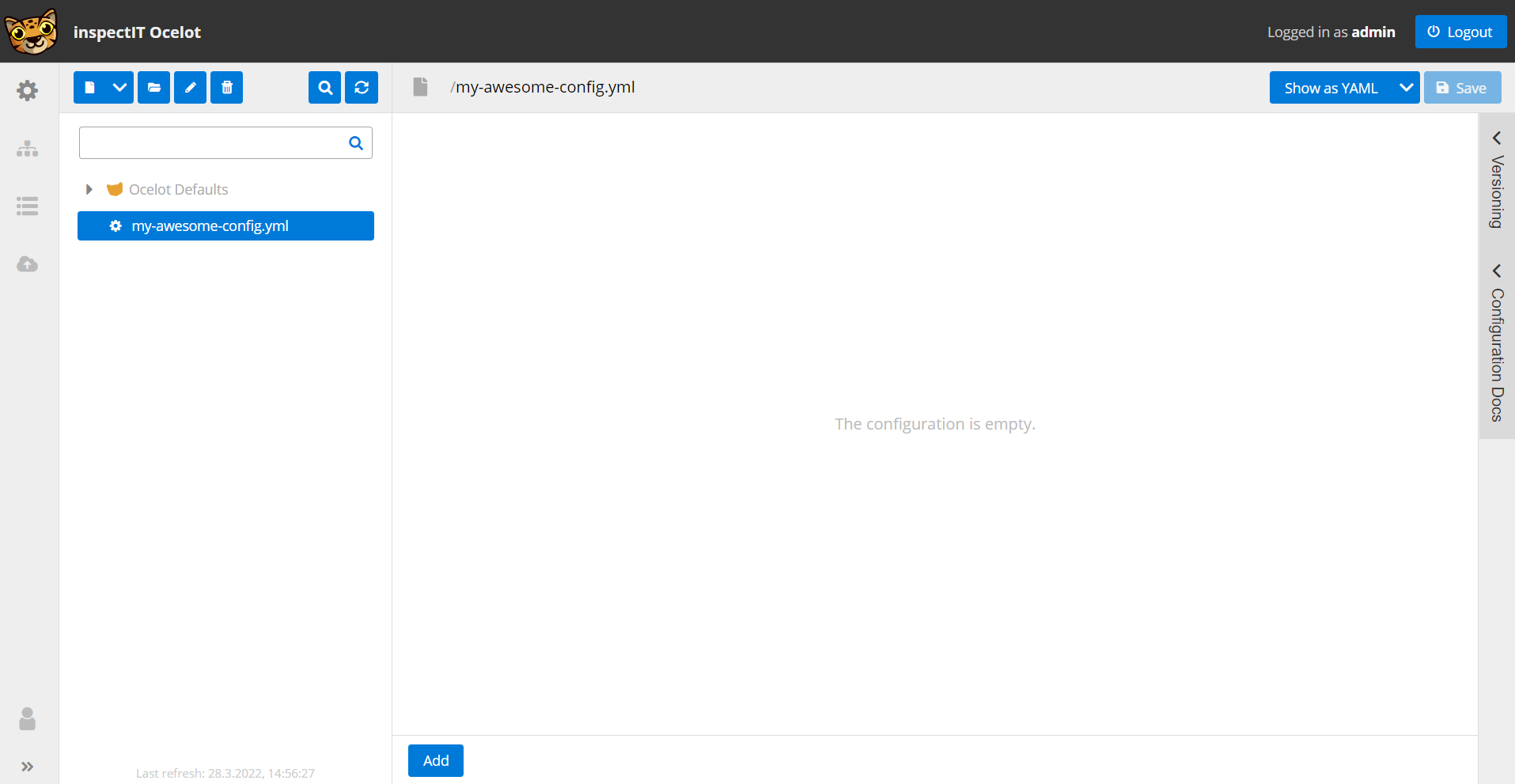
Creating a Configuration
After creating your empty file with the Scope Wizard, you can see a blank screen with an Add-button in the lower-left corner.
Clicking this button, the dialogue for defining a scope opens up.
The dialogue is split into two parts: the Type Matcher and the Method Matcher.
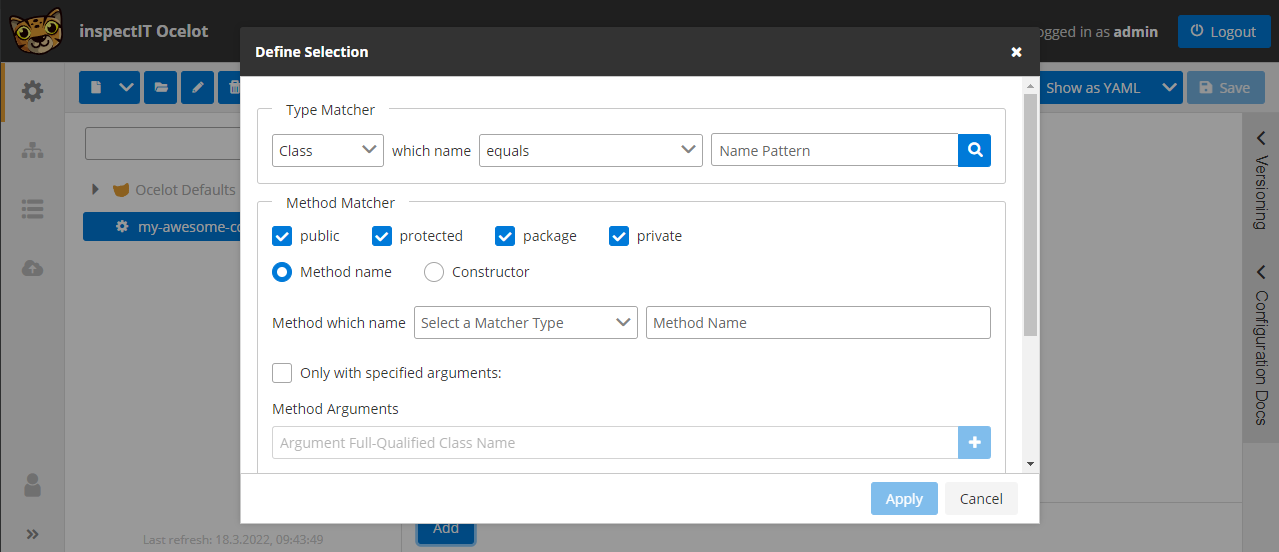
Type Matcher
The Type Matcher can be used to define parameters to select classes from your application.
First, you need to set if you want to match a class's own name with Class, the name of a superclass it is extending with Superclass, or the name of interfaces it is implementing with Interface, against the defined pattern.
Then you need to select a matching rule (e.g. equals or starts with) and define the matching pattern.
tip
If you are not familiar with the system you are monitoring, you can use the Class Browser to browse the classes loaded by your inspectIT agents.
Method Matcher
Like how you can select classes by matching them against parameters using the Type Matcher, you can also select specific methods using the Method Matcher. For this, the following settings are used.
Visibility
You can define the visibility of your target method.
The four options correspond to the visibility specifiers in Java public, protected, package, and private.
Name Matcher
You need to decide whether your target method should be selected by matching its name against a pattern or if it simply is a constructor.
If you set it to Constructor the name matching will be deactivated, since constructors do not have a name to match and instead can be found automatically.
Otherwise, you can define a name matcher by choosing a matcher type, e.g. starts with, and the pattern to match against.
Method Argument Matcher
Finally, the last setting enables you to select methods based on their arguments.
This helps if there are multiple methods with different arguments that all match the previous settings (e.g. if there is an overloaded method), but you only want to instrument specific ones.
Activate Only with specified arguments by clicking the respective checkbox.
With the +-button you can add as many arguments as you need for the method.
Then you can add the fully qualified name of each argument's type.
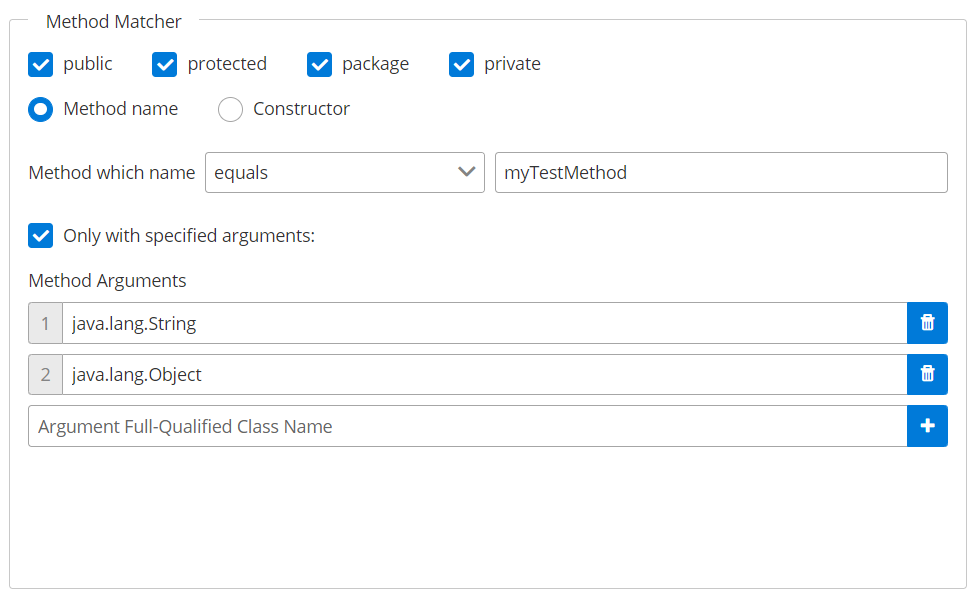
The matcher in the screenshot above, for instance, would match all of
public myTestMethod(String someParam1, Object someParam2),protected myTestMethod(String someParam1, Object someParam2),myTestMethod(String someParam1, Object someParam2),- and
private myTestMethod(String someParam1, Object someParam2).
Enabling and Disbaling Tracing and Time Measurement
After creating and applying the Scope, it appears in your main window as shown in the screenshot below.
Here you can toggle two settings: Tracing and Measure.
Tracing enables stack tracing for the respective Scope.
Measure enables measuring the execution time for all methods in the respective Scope.

Convert back to YAML
Sometimes you want to extend the configuration you have created with functions that are not supported by the Scope Wizard.
In this case you can either click the Show as YAML-button in the top-right corner of the UI or convert the file directly to YAML.
To convert the file, just click the arrow next to the Show as YAML-button and select Convert to YAML.
warning
Converting the file back to YAML is not reversible! Only use this feature if you are 100% certain that you won't use the UI-based configuration anymore!
